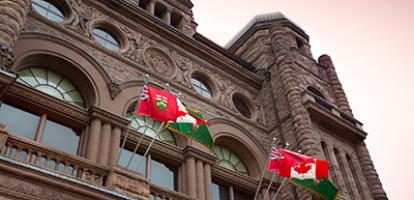Ottawa’s policies to reduce greenhouse gas emissions will cost Canadians, both directly and indirectly. In 2021, the Royal Bank estimated that reaching net-zero emissions by 2050 could cost as much as $2 trillion — which is almost three-quarters of last year’s entire GDP. We will also need to spend more to protect against a changing climate. To pay for all this, Canada badly needs economic growth.
Though virtually all governments and opposition parties twist themselves into knots to avoid saying it, trying to prevent climate change will cause economic pain. Yes, there will be new “sustainable” jobs and businesses, but the net impact will almost surely be negative. Assigning a price, by tax or regulation, to anything previously free, as we used to think emissions were, almost always comes at a cost.
That is not to say it’s not worth it. Governments around the world believe doing nothing would cost more. But action isn’t free and Canadians need more transparency about that from their leaders.
A welcome new public dashboard helps analyze the economics of climate policy. Funded by Natural Resources Canada and developed by Navius Research, it allows the user to select the costs of renewables, hydrogen or capturing carbon; the price of oil; and whether certain emission offsets are available. It can then calculate various electricity, energy, emissions, technology and economy-related outcomes.
It does all this under two policy scenarios. The first reflects federal and provincial legislation in place today, including carbon prices. The other looks at the effects of additional legislation needed to get Canada to net-zero emissions by 2050. (Unfortunately, the dashboard does not provide a scenario in which no actions have been taken, i.e., what economic growth would have been without climate initiatives.)
Comparing the two scenarios makes clear that doing more on climate could further reduce economic growth over the next 30 years. The default policies to achieve net-zero emissions by 2050 cut average annual economic growth to 1.40 per cent from the 1.87 per cent that it would be under current legislated policies (with all other assumptions left unchanged by the user).
By 2050 total GDP under the currently legislated scenario is $3.59 trillion (in 2015 dollars), compared with $3.12 trillion in the net-zero scenario, a difference of $467 billion. If we assume a population of 50 million in 2050, that means Canadians produce more than $9,000 less per person per year than otherwise, a big blow to their prosperity.
But policies to reduce emissions aren’t the only cost-creators. There is also the downside of a changing climate to contend with. Homes may need air conditioners, new shingles, more insulation, sump pumps or better insurance. Adapting to more frequent and severe storms, floods and fires may require more spending on water and irrigation systems, electricity networks, health care, buildings, dams, ports, roads, railroads, pipelines, communications networks and more. Paying for all this will be a lot easier out of a growing economy than a stagnant one.
Even without looming climate costs, Canada’s economy needs a boost. According to the OECD, we are underperforming our peers. As recently as 2006, we led Australia in per capita GDP. Last year, we were $4,000 behind (in constant 2015 U.S. dollars). Between 2002 and last year, our per capita GDP increased from $39,900 to $46,100 — just under 16 per cent. Over the same period U.S. per capita GDP grew from $49,900 to $62,900 — more than 26 per cent. A recent C.D. Howe Institute study by Bill Robson and Mawakina Bafale finds a declining stock of business capital per available worker in Canada relative to peer countries. That’s worrying. Business investment is strongly correlated with economic growth.
To halt and reverse the drag of chronically weak growth, Ottawa needs to prioritize productivity and private-sector investment. Making borrowing easier for small firms wanting to grow would help, as another new C.D. Howe report shows. So would reducing uncertainty surrounding regulation and permits, eliminating tariffs and making taxes more competitive. And, at long last, Ottawa should both take down its own barriers to internal Canadian trade and push the provinces to eliminate theirs.
Words matter, too. Louder and more frequent signals — enthusiastic cheers, not ambivalent murmurs — supporting Canadian entrepreneurs and companies in all sectors, including resource development, would help, as would speedy and professional execution of government functions.
Whether or not Canadians support the current net-zero campaign, they need to understand its costs. Reducing emissions isn’t free. We need private-sector growth to back up our low-carbon ambitions.
Charles DeLand is associate director of research at the C. D. Howe Institute.





